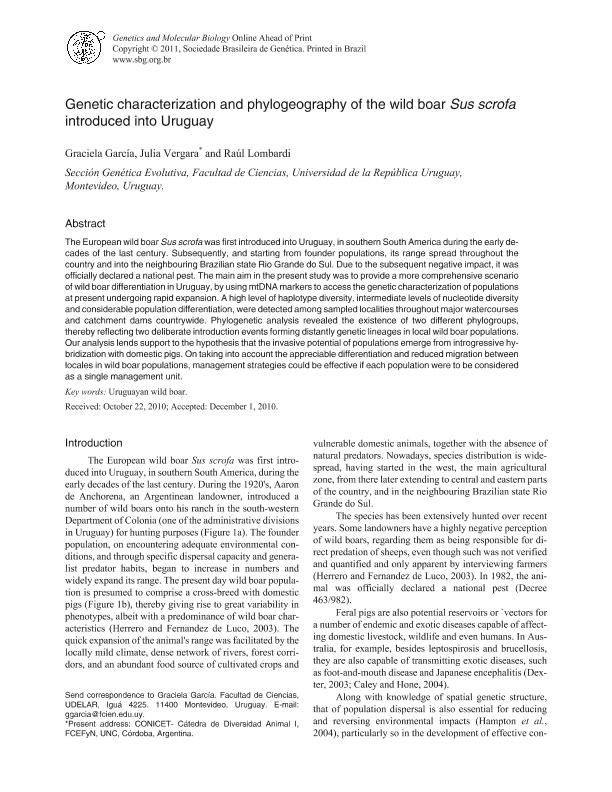Artículo
Genetic characterization and phylogeography of the wild boar Sus scrofa introduced into Uruguay
Fecha de publicación:
04/2011
Editorial:
Sociedade Brasileira de Genética
Revista:
Genetics and Molecular Biology
ISSN:
1415-4757
e-ISSN:
1678-4685
Idioma:
Inglés
Tipo de recurso:
Artículo publicado
Clasificación temática:
Resumen
The European wild boarSus scrofawas first introduced into Uruguay, in southern South America during the early decades of the last century. Subsequently, and starting from founder populations, its range spread throughout the country and into the neighbouring Brazilian state Rio Grande do Sul. Due to the subsequent negative impact, it was officially declared a national pest. The main aim in the present study was to provide a more comprehensive scenario of wild boar differentiation in Uruguay, by using mtDNA markers to access the genetic characterization of populations at present undergoing rapid expansion. A high level of haplotype diversity, intermediate levels of nucleotide diversity and considerable population differentiation, were detected among sampled localities throughout major watercourses and catchment dams countrywide. Phylogenetic analysis revealed the existence of two different phylogroups, thereby reflecting two deliberate introduction events forming distantly genetic lineages in local wild boar populations. Our analysis lends support to the hypothesis that the invasive potential of populations emerge from introgressive hybridization with domestic pigs. On taking into account the appreciable differentiation and reduced migration between locales in wild boar populations, management strategies could be effective if each population were to be considered as a single management unit.
Palabras clave:
URUGUAYAN WILD BOAR
Archivos asociados
Licencia
Identificadores
Colecciones
Articulos(CCT - CORDOBA)
Articulos de CTRO.CIENTIFICO TECNOL.CONICET - CORDOBA
Articulos de CTRO.CIENTIFICO TECNOL.CONICET - CORDOBA
Citación
García, Graciela; Vergara Oficialdegui, Julia; Lombardi, Raúl; Genetic characterization and phylogeography of the wild boar Sus scrofa introduced into Uruguay; Sociedade Brasileira de Genética; Genetics and Molecular Biology; 34; 2; 4-2011; 329-337
Compartir
Altmétricas




